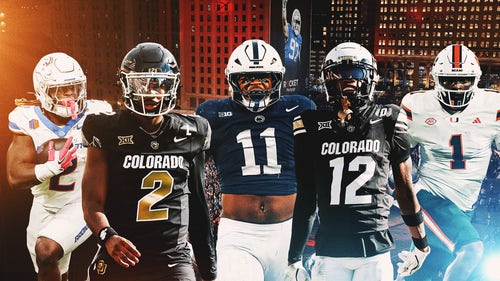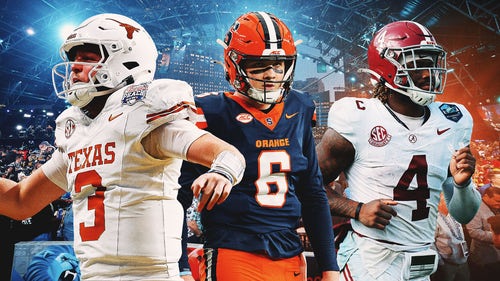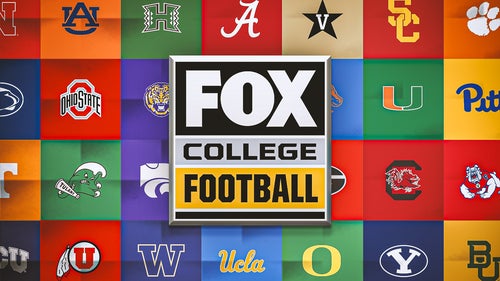With super conferences and CFP expansion on horizon, 2023 is the end of an era in college football
Welcome to the final season of college football as we know it.
Extreme? Maybe, but 2023 has an end-of-an-era feel.
Texas and Oklahoma are taking their last lap in the Big 12. The Pac-12 is still a Power Five conference. Will it even be a conference in 2024 after the Big Ten opens its West Wing and the Big 12 expands yet again? The College Football Playoff is a four-team event for the last time this year before tripling in size.
Everything about the collegiate sports model seems ripe for radical changes. But not quite yet.
“It does seem like it will feel like a lame-duck year at some point in time,” former Big 12 Commissioner Bob Bowlsby said.
Before the maps are redrawn (again) and the stakes are remade (again), there is one more season to left to appreciate what is being lost — or long for what's being gained.
“I'm resigned to it,” said ESPN's Rece Davis on The AP Top 25 College Football Podcast. “There are parts of it I will miss very much because I consider myself, at heart, a traditionalist. I love the nostalgia of the sport. Maybe, save, baseball, I don't think there is another sport that conjures up that type of deep emotional connection that college football does. And we're losing some of that."
CONFERENCE REALIGNMENT
Fourteen schools will be playing in new leagues this season: four in the Big 12, four in Conference USA and six in the American Athletic Conference. Next season, super conferences arrive as the Big Ten grows to 18 and the Southeastern Conference and Big 12 bulk up to 16 schools.
The Big 12 is where the past and future collide this fall.
While newcomers BYU, Cincinnati, Houston and UCF celebrate their arrival in the Power Five — that term is going away, too — Texas and Oklahoma are going on a farewell tour before heading to an SEC that will be anything but hospitable.
The Longhorns are favorites to the win the Big 12 — something they have not done since 2009 — and happy to wear the black suit.
“They’ve kind of adopted the John Wick mentality,” coach Steve Sarkisian told reporters. “I think that they’ve kind of assumed this mentality of, ‘Embrace the hate.’"
Say goodbye to Bedlam. The 110th meeting of the Oklahoma-Oklahoma State series will be the last, at least for now.
“I think that sadness for me is around the rivalries that will fall by the wayside,” Bowlsby said. “And I think it’s extraordinarily difficult with the larger (conference) formats to keep traditional rivalries together. And a lot of that is what puts fans in the stands.”
Realignment taketh away, but it can also giveth. After a decade apart, and insisting they don't care about each other, Texas and Texas A&M will play again in 2024.
When it comes to last-go-rounds, the saddest will be in the Pac-12, which is simultaneously on the brink of extinction while also primed to be maybe the most competitive and entertaining conference in college football this year.
Heisman Trophy winner Caleb Williams and coach Lincoln Riley have No. 6 Southern California swaggering again.
“I think coaching or playing at USC is one of the great responsibilities in our sport,” Riley said during Pac-12 media day. “This is the program that is so important to the sport, to the success of football on the West Coast in general, and has such a great history.”
USC along with No. 10 Washington, No. 15 Oregon and UCLA, coming off consecutive winning seasons seasons under Chip Kelly, are moving to the Big Ten in 2024. Arizona, Arizona State, Colorado and Utah are bound for the Big 12.
The Big Ten's poaching of the Pac-12 to create a bicoastal conference has many in college sports questioning if what's good for television networks that pay billions for the rights to broadcast football is in line with what's good for the athletes. Especially those who don't play football.
“This thing was driven by money and by football and to say these decisions benefit the student-athletes, in most cases, I'm not sure I believe that,” said Brian Polian, a longtime major college football coach who left LSU this offseason to become athletic director at Division III John Carroll University in Ohio.
COLLEGE FOOTBALL PLAYOFF
For more than a century, major college football vigorously resisted using a playoff to decide a champion.
Then it took less than a decade for the first playoff to expand. Year 10 of the CFP will be the final one with only four teams competing for a title before the 12-team format is implemented in 2024.
The days of one bad game potentially ruining a team's title hopes are going away. There will be fewer winner-take-all moments, but some see upside.
"I felt like there was much to be gained in the regular season because there were going to be more schools at the midpoint in the year that had a legitimate chance to say they were in the playoff hunt,” said Bowlsby, one of the architects of the new playoff format.
Do you love classic rivalries such as Michigan-Ohio State and Alabama-Auburn? Will you like them as much when they can be played two or even three times in a season? Maybe in back-to-back weeks?
In division-less super conferences, the odds of that happening go way up starting in 2024.
COLLEGIATE MODEL
NCAA and college sports leaders continue to push for congressional help with regulating the way athletes can be compensated for use of their names, images and likenesses.
There has been at least some momentum toward action on Capitol Hill in recent months. The NCAA is also working on its own NIL rules in case the politicians don't come through.
One way or another, there will likely be some attempt to regulate NIL and booster-funded collectives next year.
Managing NIL could be nothing compared to having major college football players, whose sport generates billions that fuel all of college athletics, legally deemed employees. For some, the days of major college football players being paid can't get here soon enough.
“To say we're going to stretch out their season, we're going to expand the playoff, but still we're not sharing in the revenue with the student-athletes?” Polian said. “When billions of dollars are being made we have to figure out a way to share revenue with the people that are earning the money. Name, image and likeness was not intended to be the answer.”
All this change on the horizon has some fans uneasy about the future of the sport they love.
Davis isn't too worried.
“Once the games start, except for moments of wistfulness among certain fanbases and certain broadcasters or journalists ... it's not going to matter,” Davis said. "Because the games are going to be a great as they have ever been."
___
Follow Ralph D. Russo at https://twitter.com/ralphDrussoAP and listen at http://www.appodcasts.com
___
AP college football: https://apnews.com/hub/college-football









